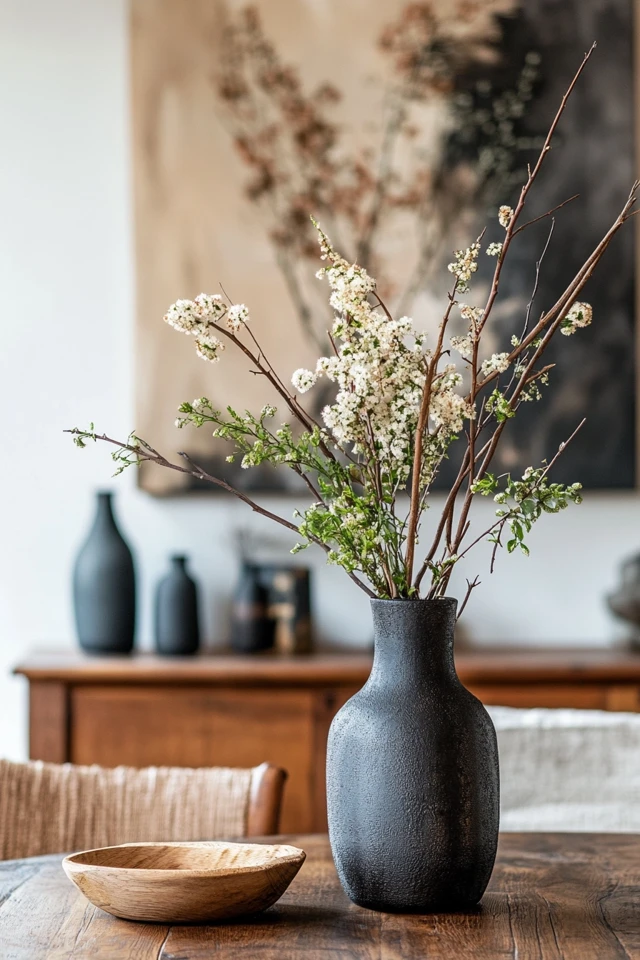Introduction
Farmhouse décor is beloved for its cozy, timeless charm, but the secret to making it truly shine lies in the art of layering. When I first discovered farmhouse style, I was guilty of making everything too “perfect.” My spaces looked more like a showroom than a home. Then, one day, a client told me they wanted their home to feel like it had been lovingly lived in for decades—a place where every piece told a story. That’s when I truly understood the power of layering.
Layering is what gives a room depth, texture, and that inviting, “come in and stay awhile” vibe. It’s not just about piling on blankets or propping up pillows; it’s about curating a mix of materials, patterns, and personal touches to create a cohesive yet relaxed space. Think of it as styling your room in a way that feels effortless but is intentional at every level.
Whether you’re starting from scratch or sprucing up an existing space, layering is the key to achieving that lived-in farmhouse look. Let me share the strategies and techniques I’ve learned along the way to help you bring warmth, texture, and personality to your home.
The Basics of Layering Farmhouse Décor
Start with a Neutral Base
Farmhouse design thrives on a neutral foundation. This creates a calming backdrop and allows your layers to shine.
- Walls: Stick to soft whites, beiges, or light grays. Shiplap walls or beadboard add texture without overwhelming the space.
- Furniture: Choose classic pieces in neutral tones like linen or light wood. For example, a beige slipcovered sofa or a weathered wood dining table serves as the perfect canvas.
Add Texture for Depth
Texture is the secret ingredient that prevents neutral spaces from feeling flat. Incorporate a variety of materials, such as:
- Wood: Reclaimed wood furniture, beams, or shelving.
- Metal: Black iron fixtures, galvanized steel, or brushed nickel.
- Textiles: Woven throws, linen curtains, and chunky knit blankets.
- Natural Elements: Jute rugs, wicker baskets, and dried florals.
Mixing these textures creates visual interest and gives your space that layered, lived-in charm.
Layering with Textiles
Textiles are one of the easiest ways to layer farmhouse décor and add softness to your space.
Throws and Blankets
- Placement: Drape a chunky knit throw over the arm of a chair or layer it at the foot of the bed.
- Colors and Patterns: Stick to neutral tones, but don’t shy away from subtle patterns like stripes, plaids, or herringbone.
Pillows
Farmhouse style loves pillows—lots of them!
- Mix and Match: Combine different sizes, textures, and patterns. For example, pair a large striped pillow with a smaller burlap or cable-knit option.
- Pro Tip: Stick to a cohesive color palette to avoid visual clutter.
Rugs
Layering rugs is a great way to add dimension.
- Start with a Base Rug: A large jute or sisal rug is a farmhouse staple.
- Add a Top Layer: Place a smaller patterned rug, like a vintage Persian or a plaid design, on top for added character.
Creating Visual Layers
Farmhouse décor shines when you layer décor items at different heights, creating a dynamic and lived-in look.
Wall Décor
- Gallery Walls: Combine vintage frames, mirrors, and farmhouse signs for a curated feel.
- Shelving: Floating wood shelves are perfect for layering small vases, books, and framed photos.
Tabletop Styling
- Trays: Use wooden or galvanized metal trays to corral candles, vases, or seasonal décor.
- Books: Stack vintage books horizontally to act as risers for other objects.
- Natural Touches: Add greenery, like potted plants or eucalyptus stems in a vase, for a fresh, organic feel.
Lighting
Lighting is an often-overlooked opportunity for layering.
- Overhead Fixtures: Choose chandeliers or pendants with farmhouse appeal, like those with wood or black metal finishes.
- Table Lamps: Add cozy lighting with ceramic or distressed wood bases.
- Candles: Scatter candles of varying heights for ambiance and warmth.
Picture Gallery
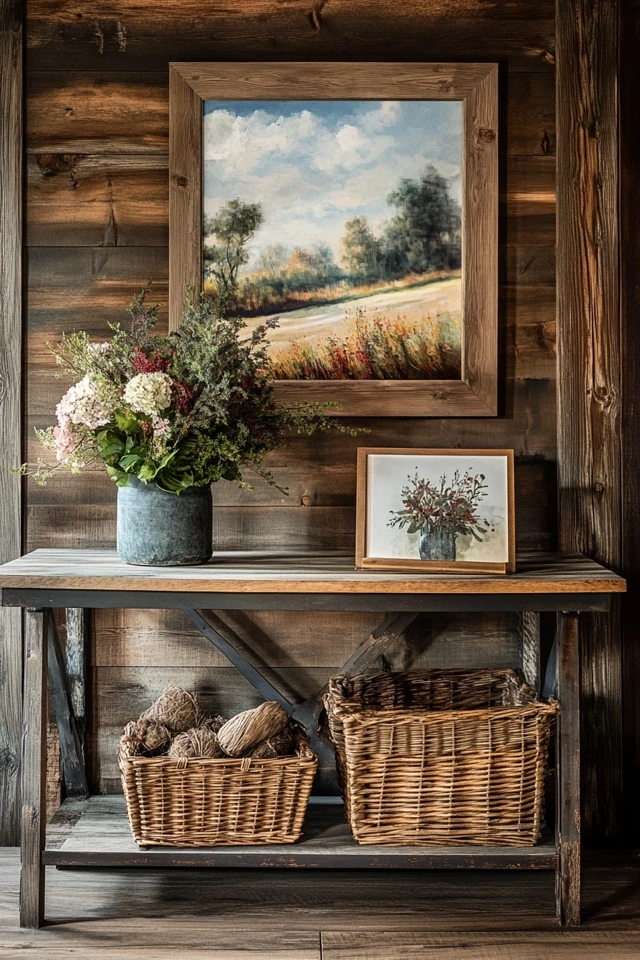
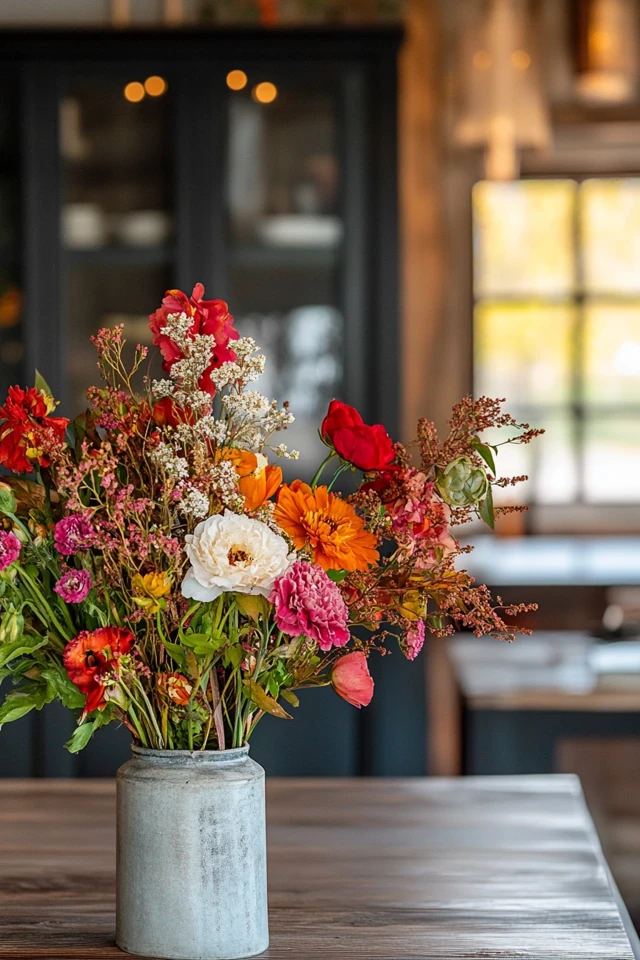
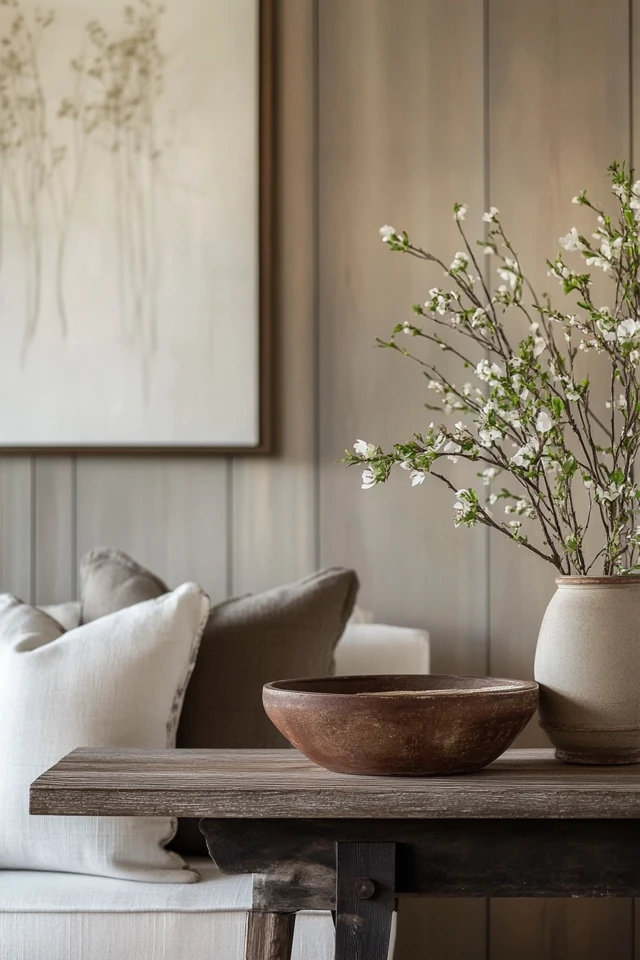
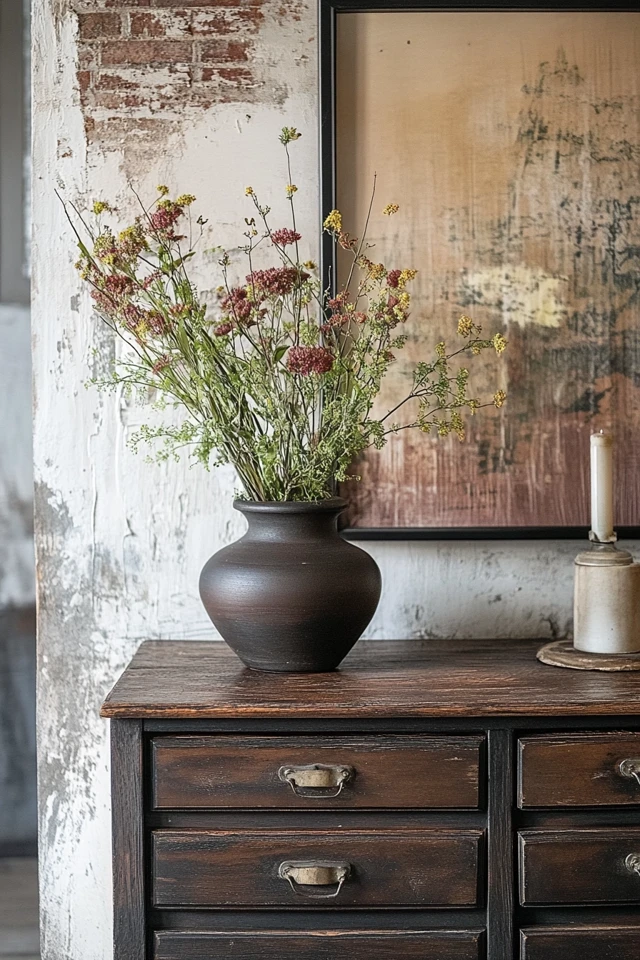
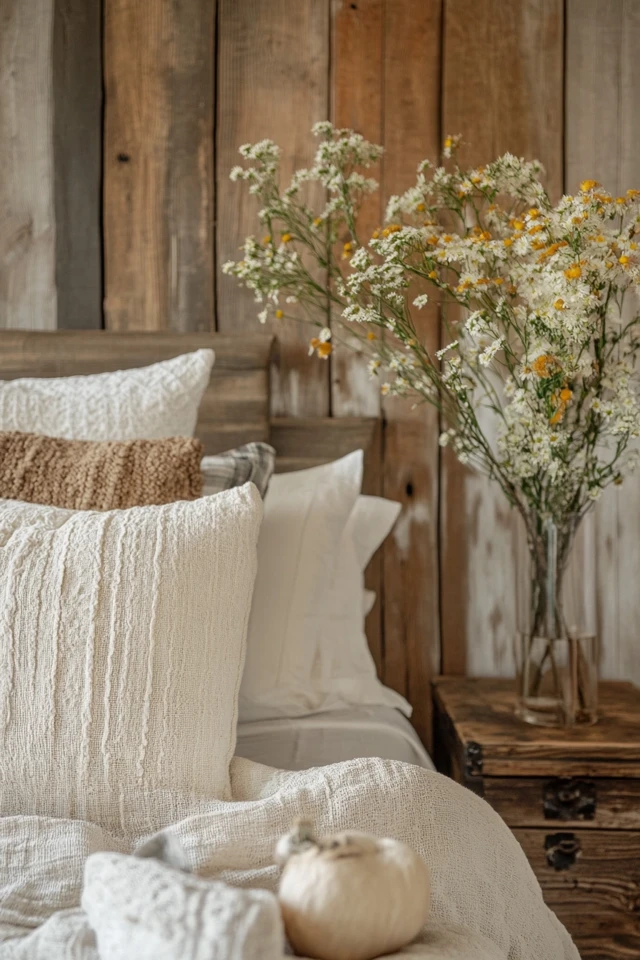
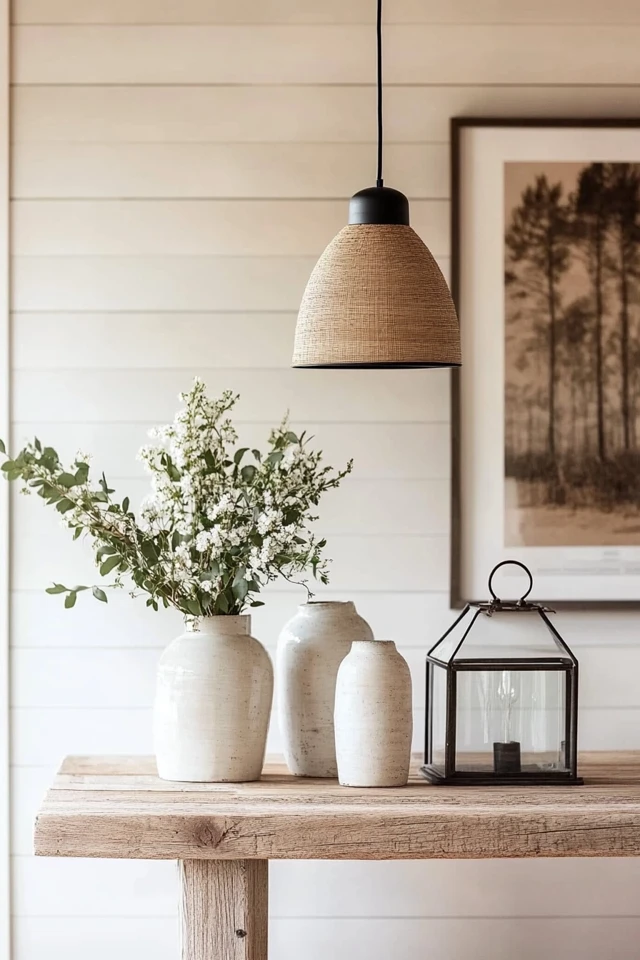
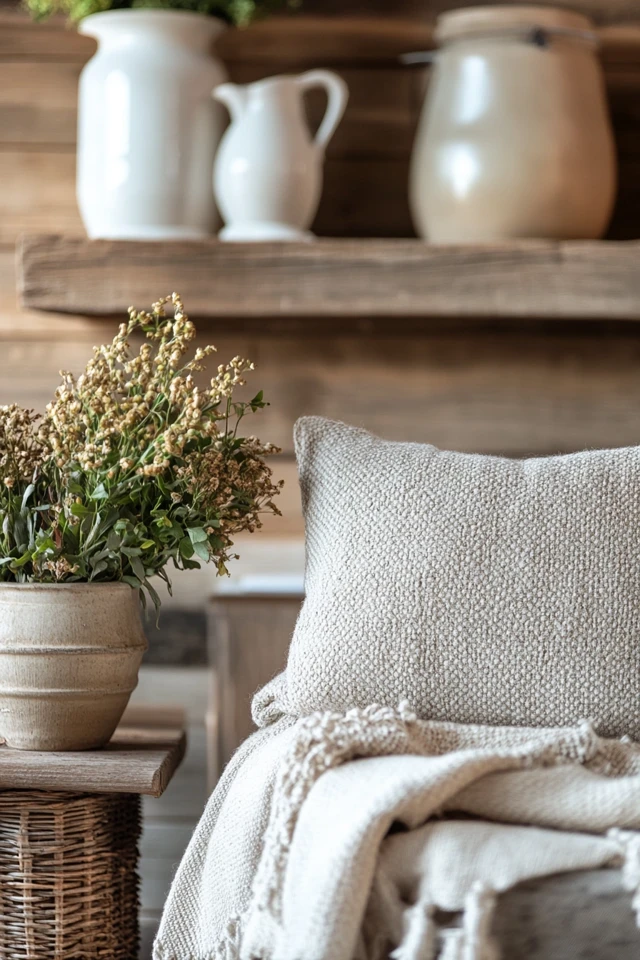
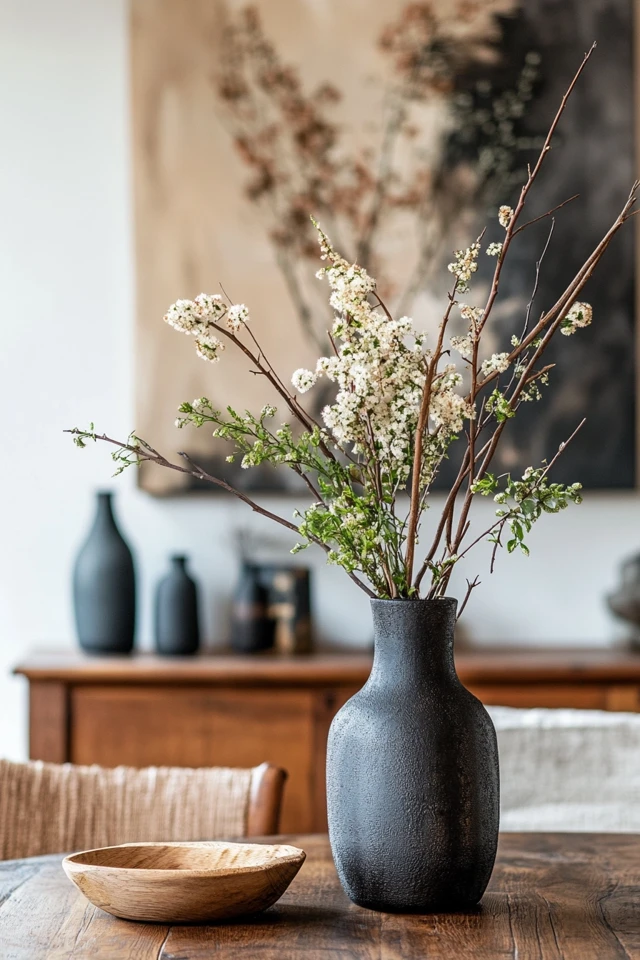
Mixing Patterns and Materials
Farmhouse layering isn’t just about textures—it’s about combining patterns and materials in a way that feels intentional.
Patterns
- Stripes and Checks: Classic patterns that are synonymous with farmhouse style.
- Floral and Botanical Prints: Perfect for adding a feminine touch.
- Subtle Geometrics: For a modern twist, incorporate soft geometric patterns in neutral tones.
Materials
- Balance Soft and Hard: Pair hard surfaces like wood and metal with softer elements like linen or wool.
- Vintage vs. New: Mix modern farmhouse pieces with authentic vintage finds to create a sense of history.
Seasonal Layering
One of the joys of farmhouse décor is its flexibility to evolve with the seasons.
Spring and Summer
- Add lighter layers, such as sheer curtains or pastel accents.
- Incorporate fresh flowers, like lavender or wildflowers, in simple vases.
Fall and Winter
- Layer chunky knit throws and wool blankets for warmth.
- Swap in darker, richer tones like deep greens or rusts through pillows or table runners.
- Add seasonal touches like pinecones, pumpkins, or holiday greenery.
Avoiding Common Layering Mistakes
- Overloading the Space: Layering doesn’t mean cluttering. Edit your décor and keep only the pieces that add value to the space.
- Ignoring Functionality: Make sure layered items don’t interfere with the usability of the room. For example, avoid over-styling a coffee table if it’s used daily.
- Sticking to One Texture: The key to a balanced look is variety—combine smooth, rough, soft, and hard textures.
Conclusion
Layering farmhouse décor for a lived-in look is all about creating a space that feels warm, inviting, and full of personality. It’s not about perfection but about curating elements that tell a story and make your home feel truly yours.
Every time I walk into a well-layered farmhouse space, I’m reminded of why I fell in love with this style. It’s the balance of simplicity and character, of comfort and beauty. Whether you’re layering textiles, mixing patterns, or adding personal touches, remember that farmhouse design is as much about how a space feels as how it looks.
So, take your time, experiment with textures and layers, and embrace the process of creating a home that feels as welcoming as it is stylish. Your perfectly imperfect farmhouse awaits!
FAQ
How do I layer textures in farmhouse décor?
Combine natural materials like wood, metal, and jute with soft textiles like linen, wool, or cotton. Use a mix of smooth and rough finishes for added depth.
What colors work best for layering in farmhouse design?
Neutral colors like white, beige, gray, and soft earth tones are ideal. Add subtle pops of color with muted blues, greens, or pastels.
Can I layer rugs in a farmhouse-style home?
Yes! Start with a large neutral rug, like jute or sisal, and layer a smaller patterned rug on top for added warmth and texture.
How do I avoid clutter when layering farmhouse décor?
Focus on quality over quantity. Keep only the items that enhance the space, and balance layers with plenty of negative space for a clean look.
What are some easy ways to add layers to a farmhouse room?
Drape throws over furniture, add a mix of pillows, use baskets for storage, and incorporate greenery or candles for a cozy and lived-in feel.

